Remember when we were kids, and dreams of the time when we could fly in our cars like George Jetson filled our thoughts on long summer afternoons? Well, get ready for the new generation of electric vehicles (EVs) and plug-in hybrid electric vehicles (PHEVs). While not quite ready for flight, these sleek, stylish, modern marvels of technology show the auto manufacturing industry’s desire to provide a mainstream alternative passenger vehicle that is powered from electricity and the desire to reach a point where we can finally eliminate our sole reliance on fossil fuel and the internal combustion engine (ICE). These new versions of electric vehicle technology not only offer us an alternative to the currently used modes of transportation, but will be able to sustain us and provide a source of backup power that will even be able to power our homes in times of emergency.
Electric vehicles will not only help to reduce the carbon footprint, they offer us a real world, real time practical solution and a promise of an evolution of new technology that is finally affordable and practical, based on the sound founding principles of the original electrical vehicle pioneers.
In this article the reader will look closely into the world of ultra fuel efficient electric vehicles touting 200- to 300-mile ranges on a single charge and 0–60 mph acceleration in less than 4 seconds. The reader will also look at the charging side and how these vehicles are charged, and at what NEC 625 requires for the charging stations, and at what the owners need to know to install and maintain these systems safely.
The electric vehicle has been around for many years in many different forms; and electric transportation for the public has been implemented across the country and the world for a century or more now. This article will look at the personal side of the industry — private electric powered vehicles as a viable alternative to the internal combustion engine (ICE) modes of transportation that are currently being used throughout the world.
Let’s look at exactly what the modern definition of anelectric vehicleis and see just what the buzz is all about. With promises of energy efficiency and a friendly co-existence with the environment, not to mention the performance benefits of smooth quiet operation, these new versions will need even less maintenance than the traditional ICE.
EVs and PHEVs in the economy
According to sites such as fueleconomy.gov, the U.S. Department of Energy (DOE), eaa-phev.org, and others the definition of anelectric vehiclereads pretty much the same, “An electric vehicle is propelled by an electric motor or motors in some cases that are powered by a single or multiple rechargeable batteries(s).”
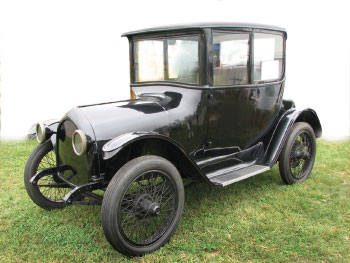
Photo 1. The 1919 electric car. At the turn of the century, elecric vehicles were already being considered as the answer to independence from fossil fuel.
TheNECuses a more detailed definition in 625.2, “An automotive-type vehicle for on-road use, such as passenger automobiles, buses, trucks, vans, neighborhood electric vehicles, and the like, primarily powered by an electric motor that draws current from a rechargeable storage battery, fuel cell, photovoltaic array, or other source of electric current. For the purpose of this article, electric motorcycles and similar type vehicles and off-road, self-propelled electric vehicles, such as industrial trucks, hoists, lifts, transports, golf carts, airline ground support equipment, tractors, boats, and the like, are not included.”
With names like Volt, Leaf, Tesla, Aptera, and Fisker these new electric vehicles are not only stronger in the acceleration department from a complete stop, but also the travel distances are greatly increased and the charging times are light years quicker, as compared to the older models.
This new technology with longer lasting rechargeable batteries on board and with more efficient power plants is allowing a seamless transition into the main stream of private passenger vehicle transportation, where currently the internal combustion engine is king but is struggling to maintain that distinction and foothold.
Many say, “Oh, yes, we have seen those new types of vehicles, and they are so small and uncomfortable!” Don’t look now, but there are luxury versions from Audi, roadsters from Tesla and ultra luxury from Fisker. A model for every pocketbook, sound familiar?
PHEV, a quick look at the history
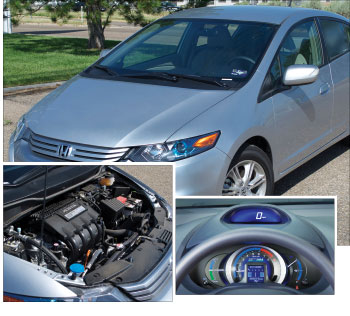
No stranger to the concept of an electric vehicle, General Motors introduced the plug-in GM XP 883 hybrid in 1969; it stored its six 12-volt lead acid batteries in the trunk and used a transverse mounted dc electric motor for a power plant—one of the early front-wheel drive axle setups for vehicles like this one. Along with its very own gasoline-powered engine on board, this hybrid could also be conveniently plugged into a receptacle at the end of the workday.
Say goodbye to an Old Friend
While the internal combustion engine is a mainstay and part of the world’s vehicular landscape, it is getting a bad rap when it comes to energy efficiency and being able to benefit from renewable energy sources. Even with the advent of the ultra fuel efficient diesel motors, diesel is still not a renewable resource and cannot sustain us far into the future.
Several manufacturers such as GM, Honda, Ford, Nissan, Tesla, Audi, and many others have crossed over into the design and, ultimately, the production of these electric vehicles, with the hopes of renewable energy sources becoming the mainstream. Car manufacturers in America and throughout the world are embracing this new technology and are working to produce personal vehicles that can benefit from these renewable energy sources.
Is the EV really more efficient?
When it comes to energy efficiency, the typical internal combustion engine really uses only 20% of the energy that is provided by traditional fuel sources such as gasoline. Conversely, an electric motor that uses stored energy from a battery can convert up to 75% of the energy produced chemically from that same battery source, whether it is single or multiple batteries.
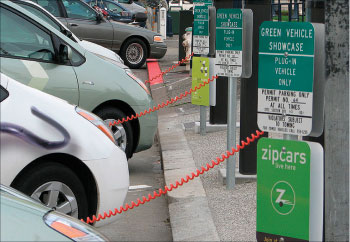
Photo 3. The new technology is becoming mainstream.
When produced in America, the energy now becomes a domestic source that can be derived from renewable energy sources. Providing and sustaining these new technologies allow us to refine, develop, and ultimately produce even more efficient modes of private transportation, which may one day replace the old modalities. While the internal combustion engine and its many cousins in many forms were state-of-the-art and mainstream in their time, they have now become a legacy to launch us into the new era of private, electrically powered passenger transportation.
The environmental side
The environmental impact of the electric vehicle is certainly at this point substantially less than its predecessor, the internal combustion engine. The operation of the electric vehicle produces zero tail pipe emissions. When the energy to supply these vehicles is derived from renewable sources such as hydro-, wind- or even solar-powered plants, there are no pollutants from the source or from the end user of this power.
Yes, a win-win situation. For the first time in decades, renewable technologies are being produced with the end use in mind, uses such as EVs and PHEVs that will not only derive immediate benefit but that can also provide an immediate benefit to the current grid and the upcoming smart grid technology.
PHEV and the blending of both worlds
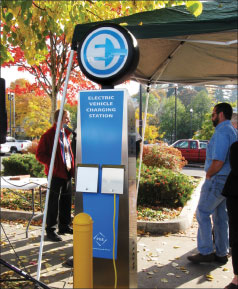
PHEV power for the world
Currently, researchers are also studying the benefits of and developing what is called vehicle-to-grid technology that would allow a two-way communication connection between the plug-in hybrid electric vehicle (PHEV) and any local utility grid that also has the technology to communicate. While the PHEV is plugged into the grid and is charging or when not being used by the owner, the local utility would be able to benefit from the stored electricity in the PHEV for additional electrical storage capacity contained in the vehicle batteries to help electricity demand. Currently when you plug your EV or PHEV into the charger, it immediately turns blue to indicate that the charger is communicating with the vehicle. A flashing amber or yellow will turn to a solid green when the vehicle is fully charged and ready to go. These new vehicles are not only efficient but intuitive, requiring little interface.
Let’s get charged up!
Now that we have looked at this new technology, how do we keep these strong, silent beauties charged up and ready to roll? Therein lies the requirements of Article 625 to assist owners of this new technology in the implementation and maintenance of a safe environment where charging a new EV or PHEV is simply the twist of a cord cap.
Safety first and foremost
Based on industry standards, a safe installation and the safe use of the modern EV and PHEV charging stations are now the norm. Some of these industry standards include the Society of Automotive Engineers — like SAE J1772, SAE Electric Vehicle Conductive Charge Coupler, and SAE J1773, SAE Electric Vehicle Inductively Coupled Charging — for the connections to the vehicles. Underwriters Laboratories standards include — UL 2231-1, Standard for Personnel Protection Systems for Electric Vehicle Supply Circuits: General Requirements, and UL 2231-2, Standard for Personnel Protection Systems for Electric Vehicle Supply Circuits: Particular Requirements for Protection Devices for Use in Charging Systems.
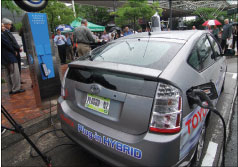
Photo 5. Not quite done with fossil fuel yet, but it won’t be long.
Now that we have seen that the industry of EVs, PHEVs and the charging systems that keep them going have become standardized for the most part, let’s look at some of the major Code requirements involved when we talk about a modern electric vehicle charging system.
Listing and labeling
As is generally the case with all equipment that is referred to in the NEC, a nationally recognized testing lab (NRTL) is required to list and label the charging equipment for the intended use as indicated in 625.5 of the NEC.
Vehicle connections to the charger
As we move into the coupler requirements in 625.9 for the charger connection to the vehicle, the reader will see that there are six distinct requirements; these range from the polarization to the coupler, to the protection of the user against inadvertent contact with live parts, to the interchangeability of the coupler for grounding and non-grounding type vehicle couplers. There are even provisions for unintentional disconnection.
Proper equipment marking
When installing this equipment, the workman should make a thorough check to ensure that the equipment is being used in accordance with the intended use. The markings that are found on the electric vehicle supply equipment are required to be in accordance with 625.15 to indicate that it is intended for use with electric vehicles, as well as to show what the ventilation requirements are, and whether it is required to be vented or not.
Types of cables for vehicle chargers
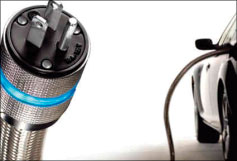
Interlock requirements
To further ensure that the end user of this charging equipment is safe, an interlock needs to be provided in accordance with 625.18 so that the cable is completely de-energized when the coupler that connects to the vehicle being charged is disconnected. No need to apply this requirement if we are using a portable cord-and-plug-connected means for charging the vehicle that would be connected to a single-phase, 125-volt, 15- or 20-ampere rated receptacle outlet.
This interlocking requirement also comes into play in 625.19 for the occasions when the cable may become exposed to undue strain that could result in a cable rupture or the exposure of live parts, in the event the strain becomes too great for the cable to withstand. As with the requirements that we discussed in 625.18 for the interlocks, the same holds true for strain protection; there would be no need to apply this requirement if we are using a portable cord-and-plug-connected means for charging the vehicle that would be connected to a single-phase, 125-volt, 15- or 20-ampere rated receptacle outlet.
Overcurrent protection of the charging equipment
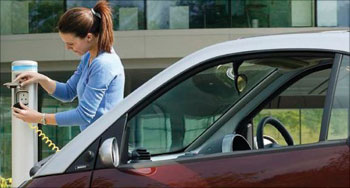
Section 625.21 requires that where non-continuous loads are supplied from the same feeder or branch circuit that is also supplying the vehicle charging equipment, the overcurrent protection device would be required to have a rating of not less than the total of the non-continuous loads plus 125 percent of the continuous loads.
Protection for personnel
In addition to the requirements that we have already covered, equipment that is designed for electric vehicle supply is required to have a listed system of protection to prevent inadvertent shock hazards from occurring. This requirement is elaborated upon in 625.22; not only is this a required feature but it needs to be incorporated into the construction of the equipment as well.
Vehicle charger disconnecting means
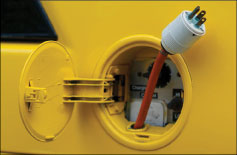
In addition to the disconnecting means, provisions are required to be made to ensure that during a primary power loss scenario from either the serving utility or other source, electricity will not be backfed through the electric vehicle or supply equipment to the onsite premises wiring, unless permitted by 625.26.
While the reader can see that a lot of careful thought and planning went into the formulation of Article 625, there is an ever-changing landscape in the EV and PHEV industry that is sure to impact the requirements of electric vehicle charging equipment for many years to come. As always, the NEC is up for the challenge and will remain on the forefront of this technology as it progresses.

Let’s sum it all up
We have looked at the business end of this whole technology, the charging station, for without these silent providers we surely will not go far. We have seen the highlights ofNEC625 requirements, examining some of the major issues with regard to a charging system and to long-term safe use and maintenance, and the requirements to achieve both.
No longer something in a popular science magazine, these vehicles are at a dealer near you, ready to be purchased and ready to perform, challenging the sciences of old, showcasing the technology of today, and focusing on the use of the abundant renewable energy that will be generated tomorrow.
It’s an exciting time for sure; just trying to imagine where we have been and where we are going is becoming a moving target daily. With the continued support of the many players in the automotive industry, the government, and private industry — and let’s not forget the host of pioneers out there — continue to reach breakthroughs every day to further this idea. We cannot help but continue to improve on the future of EVs and PHEVs until one day we can all enjoy the strong silent power of a quiet comfortable ride.














Find Us on Socials